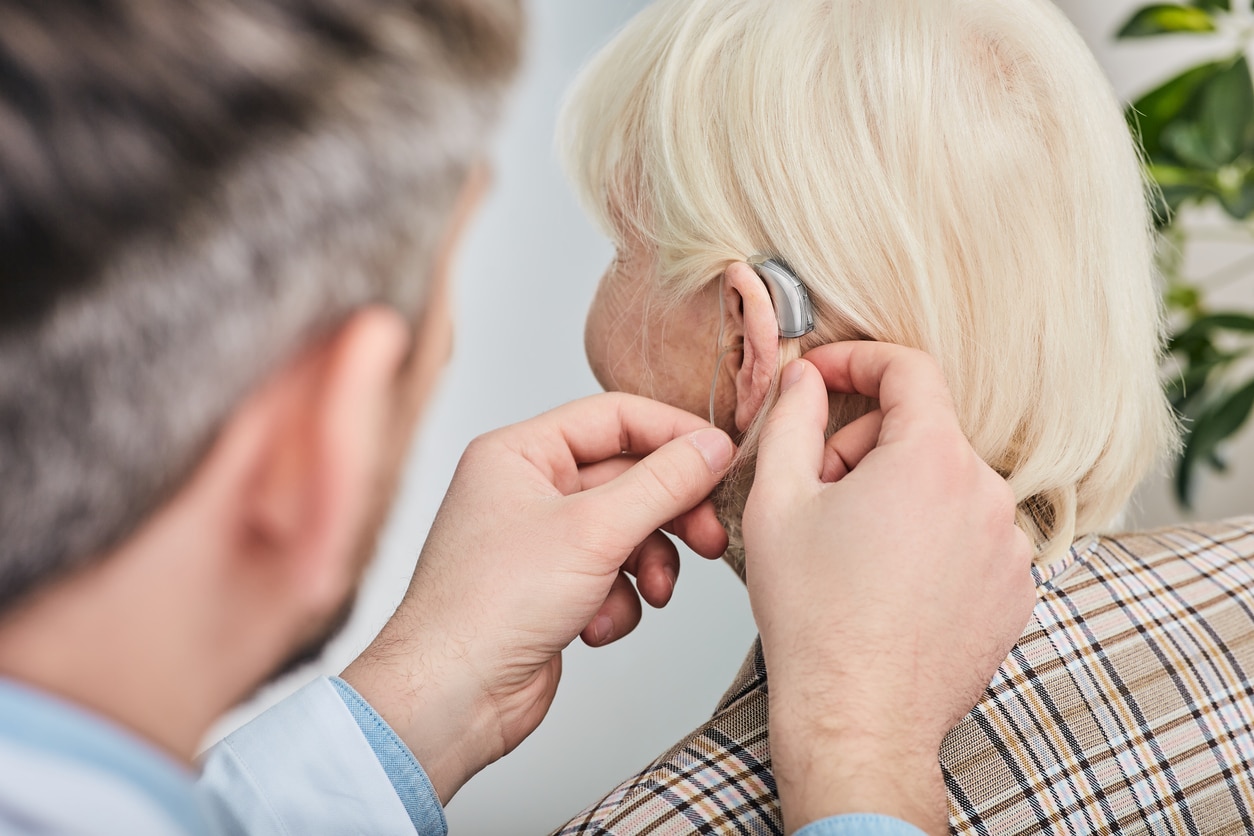Data from the MarkeTrak 2022 survey shows that most hearing aid users report regular quality-of-life benefits from their devices. Hearing aids can help you better communicate with your loved ones by identifying and amplifying speech sounds and diminishing ambient noise. They have also been effective in managing tinnitus symptoms.
Before you are able to enjoy all the benefits that hearing aids have to offer, you will need to make an appointment for a hearing aid fitting and one for programming. Most hearing aid fittings include the following:
- Choosing a hearing aid
- Ear molds
- Hearing aid programming and testing
Let’s examine each of these a little more closely.
Choosing A Hearing Aid

Hearing aids come in two basic styles: behind-the-ear (BTE) and in-the-ear (ITE).
BTE devices sit behind the ear with a tube running over the top of the ear and into the ear canal to deliver sound. The more popular option, BTE devices do not require a custom mold and are generally more powerful, making them a good option for more pronounced hearing loss.
ITE devices sit in the ear canal. They offer more specific options, including:
- Completely-in-the-canal (CIC)
- In-the-canal (ITC)
- Receiver-in-the-canal (RIC)
Because ITE options are designed to fit inside the ear, they usually require a custom mold.
In addition to different sizes and styles, some hearing aids may include but are not limited to:
- Bluetooth®
- Rechargeable batteries
- Water-resistant coating
Your hearing aid specialist will ask you questions about your lifestyle and preferences to help determine the suitable device for you.
Ear Impressions
If you choose a hearing aid that requires a custom fit, your specialist will take a mold or impression of your ear and send it to the manufacturer to make your devices. Time frames for receiving your devices will vary depending on the manufacturer. Ask your specialist how long they expect the wait to be so you can prepare.
Hearing Aid Programming And Testing
When your hearing aids arrive at the office, your specialist will call you for another appointment to check the fit and program the devices to match your needs. Hearing aid programming will be either automatic or manual. Manual programming is more precise as it is done on a computer by a specialist, whereas automatic is less precise but can be set by you through a smartphone app.
Once your hearing aids are programmed, you can begin enjoying their benefits. Try wearing them into The Java Room and experience the new ease of communication between you and your favorite barista.
Contact Massachusetts Hearing Group today to begin your hearing treatment journey with one of our trusted specialists.